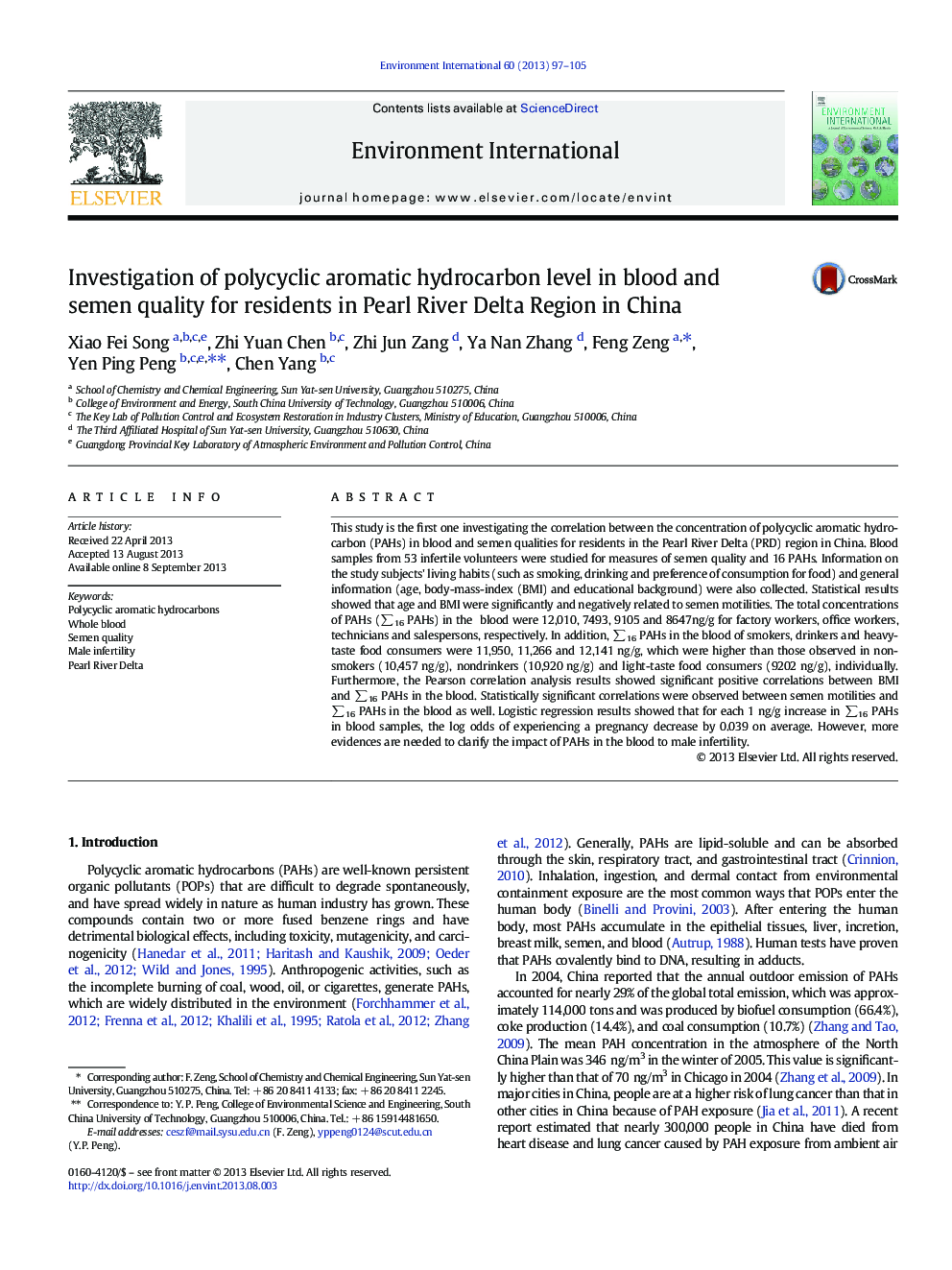| Article ID | Journal | Published Year | Pages | File Type |
|---|---|---|---|---|
| 6314185 | Environment International | 2013 | 9 Pages |
Abstract
This study is the first one investigating the correlation between the concentration of polycyclic aromatic hydrocarbon (PAHs) in blood and semen qualities for residents in the Pearl River Delta (PRD) region in China. Blood samples from 53 infertile volunteers were studied for measures of semen quality and 16 PAHs. Information on the study subjects' living habits (such as smoking, drinking and preference of consumption for food) and general information (age, body-mass-index (BMI) and educational background) were also collected. Statistical results showed that age and BMI were significantly and negatively related to semen motilities. The total concentrations of PAHs (â16 PAHs) in the  blood were 12,010, 7493, 9105 and 8647ng/g for factory workers, office workers, technicians and salespersons, respectively. In addition, â16 PAHs in the blood of smokers, drinkers and heavy-taste food consumers were 11,950, 11,266 and 12,141 ng/g, which were higher than those observed in nonsmokers (10,457 ng/g), nondrinkers (10,920 ng/g) and light-taste food consumers (9202 ng/g), individually. Furthermore, the Pearson correlation analysis results showed significant positive correlations between BMI and â16 PAHs in the blood. Statistically significant correlations were observed between semen motilities and â16 PAHs in the blood as well. Logistic regression results showed that for each 1 ng/g increase in â16 PAHs in blood samples, the log odds of experiencing a pregnancy decrease by 0.039 on average. However, more evidences are needed to clarify the impact of PAHs in the blood to male infertility.
Related Topics
Life Sciences
Environmental Science
Environmental Chemistry
Authors
Xiao Fei Song, Zhi Yuan Chen, Zhi Jun Zang, Ya Nan Zhang, Feng Zeng, Yen Ping Peng, Chen Yang,
